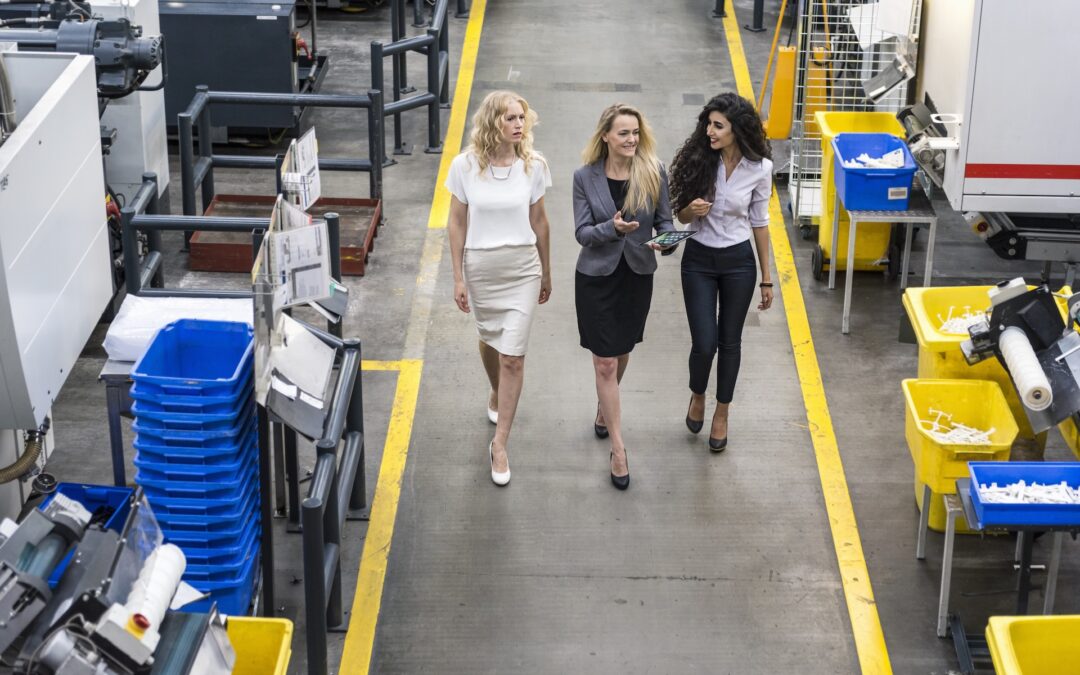In today’s fast-paced and technology-driven world, businesses must adopt innovative solutions to remain competitive. Many companies have found that technological advancements not only help them save money but also fuel growth. Here are five businesses that have experienced significant savings and growth through technological innovations.
Table of Contents
1. Amazon: Optimizing Logistics with Robotics and AI
Innovation: Robotics, Artificial Intelligence (AI), and Automation
Amazon is a well-known leader in e-commerce, but its innovation in logistics has truly set it apart. The company has invested heavily in robotics and AI to optimize its fulfillment centers. In 2012, Amazon acquired Kiva Systems, a robotics company, which revolutionized its warehouse operations. Today, Amazon uses thousands of robots that move items around fulfillment centers, reducing the time it takes to prepare an order for shipment.
How Amazon Saved & Grew:
- Cost Savings: Automation drastically reduces the need for manual labor, allowing Amazon to lower its operational costs. These innovations also improve efficiency, ensuring that inventory is better managed and orders are fulfilled faster.
- Growth: By improving delivery speed and reducing operational costs, Amazon was able to expand its Prime membership base, increase customer satisfaction, and maintain its lead in the competitive e-commerce market.
Outcome: Amazon’s use of robotics and AI has not only saved it billions in operational costs but also facilitated rapid expansion globally. By automating its warehouses, Amazon reduced order fulfillment times significantly, enabling faster deliveries, which boosted customer retention and helped the company scale rapidly.
Learn More: Amazon Robotics

2. General Electric (GE): Predictive Maintenance in Manufacturing
Innovation: Industrial Internet of Things (IIoT) and Predictive Maintenance
General Electric (GE) has made significant strides in incorporating the Internet of Things (IoT) and data analytics into its manufacturing processes. Through the use of sensors and connected devices, GE collects real-time data from machines and equipment across its facilities. Using this data, GE implemented predictive maintenance techniques to detect potential issues before they become critical.
How GE Saved & Grew:
- Cost Savings: By predicting when machines will fail, GE has been able to reduce unplanned downtime and costly repairs. Instead of relying on routine maintenance, the company can now maintain equipment based on its actual condition, reducing maintenance costs and improving efficiency.
- Growth: GE has capitalized on its expertise in predictive maintenance by offering solutions to other manufacturers. GE Digital’s Predix platform is now used globally to help other businesses optimize their operations.
Outcome: GE saved hundreds of millions of dollars by reducing equipment failures and extending the life of machinery. In addition, the company’s industrial IoT offerings have positioned it as a leader in the field, attracting new clients and opening up new revenue streams.
Learn More: GE Digital – Predix
3. Starbucks: Using Data Analytics to Optimize Operations
Innovation: Big Data and Advanced Analytics
Starbucks has long been at the forefront of using technology to enhance its customer experience. Through its mobile app, the company collects a massive amount of customer data, which it uses to inform decisions about product offerings, store locations, and marketing campaigns. Starbucks also uses predictive analytics to optimize inventory and supply chain management.
How Starbucks Saved & Grew:
- Cost Savings: By analyzing customer data, Starbucks has been able to predict demand more accurately, reducing waste and ensuring that inventory is efficiently managed. This has lowered food spoilage and improved the overall profitability of its stores.
- Growth: The use of data analytics has helped Starbucks personalize its offerings, creating a more targeted customer experience. By recommending drinks and rewards based on purchasing behavior, Starbucks has increased customer loyalty and engagement.
Outcome: Starbucks increased its efficiency by leveraging customer data and analytics, leading to reduced operational costs. The savings and insights gained from this data also fueled new product innovations and improved customer retention, leading to consistent revenue growth.
Learn More: Starbucks Technology
4. Tesla: Reducing Manufacturing Costs with Gigafactories
Innovation: Gigafactories and Vertical Integration
Tesla has redefined the electric vehicle (EV) industry with its innovation in battery production and vehicle manufacturing. One of Tesla’s most notable advancements has been the development of Gigafactories, massive facilities dedicated to producing batteries and other key components for its electric vehicles. By building its own factories, Tesla controls more of its production process and significantly reduces reliance on third-party suppliers.
How Tesla Saved & Grew:
- Cost Savings: By vertically integrating its manufacturing process, Tesla has been able to cut costs associated with outsourcing production. The Gigafactories also enable Tesla to scale up production, which reduces the per-unit cost of each vehicle as production volumes increase.
- Growth: The Gigafactories have enabled Tesla to meet the growing demand for electric vehicles. Additionally, Tesla’s ability to produce batteries at a lower cost has allowed the company to price its cars more competitively, attracting more customers and increasing market share.
Outcome: Tesla’s Gigafactories have driven down the cost of electric vehicle production, allowing the company to uncover savings and expand globally. Tesla’s cost-efficient production methods have positioned it as a leader in the EV market and have driven strong revenue growth.
Learn More: Tesla Gigafactories
5. Walmart: Integrating Blockchain for Supply Chain Transparency
Innovation: Blockchain Technology in Supply Chain Management
Walmart has embraced blockchain technology to improve transparency and efficiency in its supply chain. In partnership with IBM, Walmart has implemented blockchain systems to track the journey of products from farm to store. The technology allows Walmart to trace the origins of produce and other goods quickly and accurately, reducing the time spent tracking down information in the supply chain.
How Walmart Saved & Grew:
- Cost Savings: By using blockchain to streamline its supply chain, Walmart has reduced inefficiencies and the time spent manually tracking product origins. This has also minimized food waste, as the company can now quickly identify and remove contaminated products from shelves.
- Growth: The transparency and accuracy provided by blockchain have enhanced Walmart’s ability to manage its supply chain. As consumers increasingly value food safety and sustainability, Walmart’s use of blockchain technology has bolstered its reputation as a responsible retailer.
Outcome: Walmart’s integration of blockchain technology has saved money by improving traceability and efficiency in the supply chain. The company’s ability to offer greater transparency has also built consumer trust, driving growth in both the food and grocery sectors.
Learn More: Walmart and Blockchain
Can I find savings with my business?
While these are major global brands it showcases how leveraging innovative technologies to find significant savings can fuel growth. The same mindset and focus can reveal similar results for any corporation or mom and pop shop.
Whether through automation, predictive maintenance, data analytics, vertical integration, or blockchain, any company can harness technology to cut costs, increase operational efficiency, and enhance customer experience. The result can be not only reduced expenditures but also the ability to scale and expand in competitive markets.
If you are looking to streamline your processes and need help to find savings in your organization, Kenneth L. LaVan would be happy happy to discuss with you. Contact Ken today.





